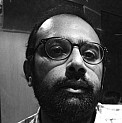If you wake up from coma after 20 odd years and went to the movies now, the first thing you would notice is the ubiquitous stubble on our heroes. There was a time if you would remember when the beard was used to indicate a disguise or a loss of a dearly loved one. The beard often would render our heroes unrecognizable to the villains. Sometimes, the heroine dumped our hero and he was too sad to shave. Now, the ever-present stubble is used to indicate a kind of nihilism, when the hero can’t be bothered to look well groomed.
The college going Vikram in the paradigm shifting Sethu sported a stubble. Dhanush, many say, looks better with a beard. Like the actor himself says in a movie: “You may not like me at first sight, but you will get used to my looks and start liking me.” More recently, Vijay Sethupathi too sports a lush, fully grown beard quite often.
So what is it about the stubble that has made it omnipresent in Tamil cinema?
The stubble, it is often thought, has something to do with the rise of realism in Tamil cinema. The stubble got there when filmmakers began shunning drama and favored reality. The rise of the gangster genre and the anti-hero had a definite impact on actors favoring the unshaven look. Our heroines too fell and fell hard for the hero with a carefully cultivated ruggedness but nevertheless handsome look. The heroine finds that beneath the rough exterior the hero does have a heart of gold.
Indeed, the very definition of handsomeness has undergone a sea change. There was a time when MGR and Sivaji Ganesan would shrink away with horror from appearing with a beard. Nowadays, actors are required to grow a beard, and a real one at that. Gone are the days when artists could get away with a fake beard.
Our heroes, however, have always sported a mustache. In fact, this is the first thing a North Indian would notice about a South Indian hero. The evolution of the beard has a more curious story.
In the late 1970s and early 1980s, Tamil cinema was shaken to its roots by the rise of the parallel cinema movement led by Bharathiraja, Mahendran and Balu Mahendra. All three directors made wildly successful films, but infused in them a fresh sense of reality. Films were also shot in real locations instead of the studios and this was particularly noticed in Annakili and 16 Vayathinile.
The second coming of realism with Sethu in 2000 featured Vikram with a stubble. The dawn of the fresh wave of neorealism owes a lot to the parallel cinema movement of the late 1970s. The frustration of the audience with the increasing absurdity of commercial cinema also played a prime role. Vikram’s success soon spawned clones. The beard was no longer a fashion accessory; it was part and parcel of the character.
Alongside all of this, came the gangster genre in which heroes like Dhanush, again with a beard, carved a niche for themselves in films like Pudhupettai. The small time rowdy became a constant feature of Tamil cinema so much so it is already spoofed in films like Naanum Rowdy Dhaan.
So is there more to the stubble than you thought? Oh definitely.












